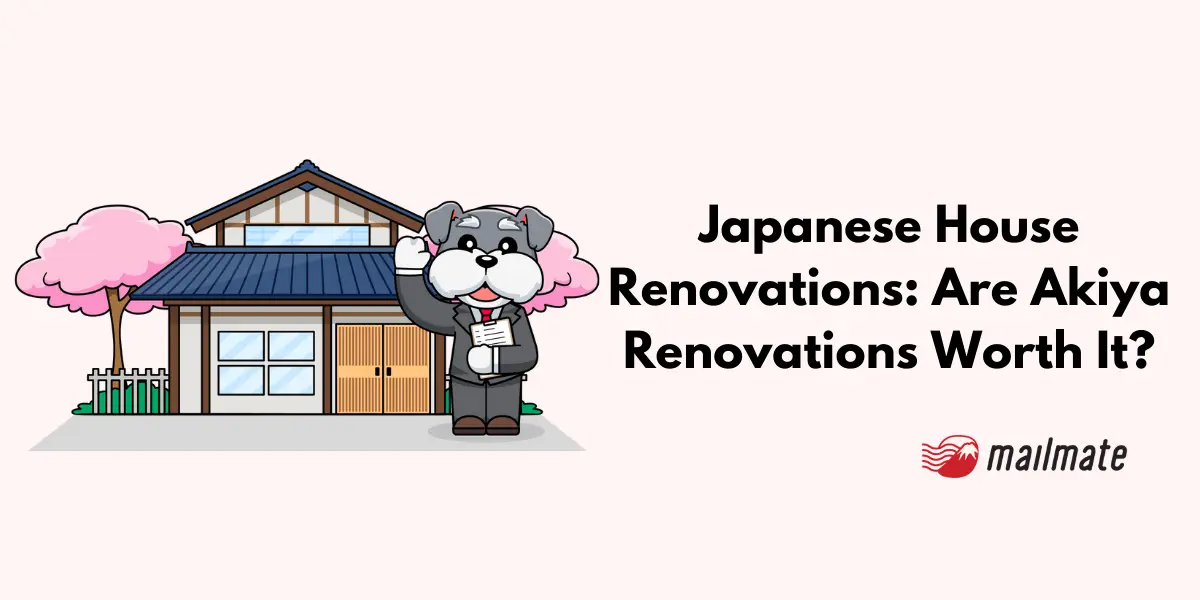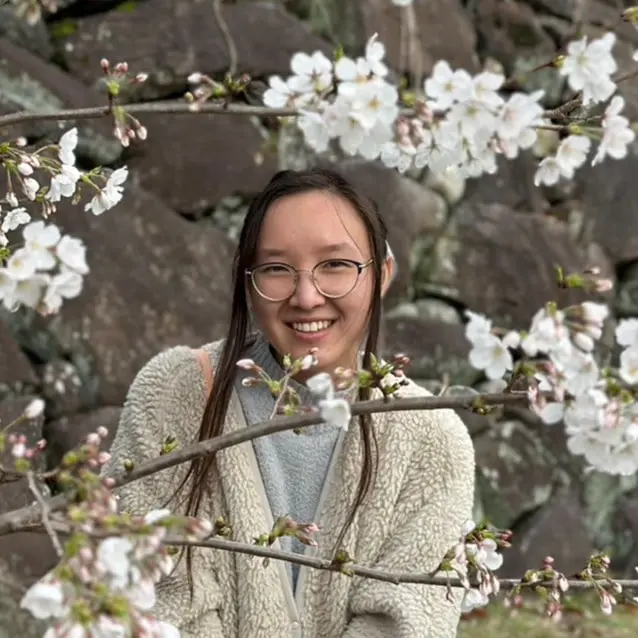Japanese House Construction: Are Akiya Renovations Worth It?

Buying property is a huge milestone for anyone. But if you have recently purchased an akiya or obtained a free house in Japan, you may want to prepare yourself for some renovation work.
Japanese house construction or reconstruction ranges from what needs to be fixed to how much it will cost.
Here, we explain the renovations that would need to be done for an akiya in Japan to help you make an informed decision about whether akiya renovation aligns with your budget, timeline, and goals.
An overview of Japan's abandoned houses (akiya)

The Ministry of Internal Affairs and Communications found that 13.6% of all houses in Japan were abandoned in 2018. Reasons range from the shrinking population to property taxes, city preferences, and not wanting to inherit these homes.
As a result, these Japanese abandoned houses tend to be old, vacant, and unmanaged, leading to much-needed akiya renovations.
The Japanese government acknowledges these issues and has offered subsidies, tax deductions, and support programs to incentivize renovations for akiya houses.
Are there any government incentives for akiyas?
Back in December 2023, the Japanese government passed a law to encourage owners to maintain their vacant homes. The law was accompanied by various incentives and programs to encourage residents and foreigners to buy and renovate these akiyas.
The incentives were generally as follows:
Rent affordability support system: a maximum of 40,000 yen per month to help with rent.
Repair construction cost support system: a subsidy of up to 1 million yen per house to help with a Japan house renovation and ensure up-to-date safety standards.
Vacant house demolition subsidy system: a certain amount is given to help with demolition costs to make new land use.
Additionally, these support systems have specific eligibility requirements that will vary between prefectures, cities, and local municipalities.
Why should you have an akiya house renovated?

There are three main reasons why people purchase akiya houses in Japan: to live in them, to use them as vacation homes, or to make investments in Japan's real estate market.
All three reasons require the akiya house to have a new life for its new function. As such, these properties will need reconstruction and renovation.
Depending on the property's age and deterioration, only renovations may be required, such as minor plumbing and electrical wiring vs reconstruction for a more earthquake-resistant building and better insulation.
Essential due diligence: What needs to be checked for an akiya house?

Traditional houses might have mold, termite damage, or structural issues in rural areas.
Be sure to have an inspector determine what needs to be repaired and learn the estimated costs for the needed repairs. Ask questions such as: Does it sit directly on the floor? Are the beams and frame in good shape? etc.
Here's a checklist to run through if you're considering purchasing an akiya:
Legal and administrative
Verify clear title ownership through local legal registry
Confirm property boundaries and any easements
Check zoning restrictions and building code compliance
Research any outstanding taxes or liens
Understand inheritance laws if the property was inherited
Verify utilities availability and connection costs
Physical inspection priorities
Foundation stability and structural integrity
Roof condition and water damage
Electrical system safety and capacity
Plumbing functionality and water quality
Insulation adequacy for local climate
Pest damage, particularly termites
Mold and moisture issues
Earthquake resistance compliance
Neighborhood considerations
Access to essential services (medical, grocery, emergency)
Public transportation availability
Internet connectivity options
Community acceptance of foreign residents
Local contractor and service provider availability
How much does it cost to renovate a house in Japan?
Project Type |
Typical Total Cost |
Timeline |
Scope of Work |
Basic Renovation |
¥2,000,000–¥5,000,000 |
2–4 months |
Essential repairs only (plumbing fixes, electrical safety, wall/floor replacement) |
Modern Comfort Renovation |
¥5,000,000–¥15,000,000 |
4–8 months |
Kitchen & bathroom upgrades, insulation, windows, HVAC |
Complete Reconstruction |
¥15,000,000–¥40,000,000+ |
8–18 months |
Structural overhaul, seismic reinforcement, architectural redesign |
New Construction (from scratch) |
¥30,000,000–¥60,000,000+ |
10–15 months |
Full custom build meeting modern building codes |
Level 1: Basic habitability (¥2,000,000-¥5,000,000)

Timeline: 2-4 months
Essential repairs to make property livable:
Wallpaper/flooring replacement: ¥800-¥1,200 per sqm
Basic kitchen functionality: ¥300,000-¥600,000
Bathroom renovation: ¥400,000-¥800,000
Electrical safety upgrades: ¥200,000-¥500,000
Plumbing repairs: ¥150,000-¥400,000
Pest treatment and prevention: ¥100,000-¥300,000
Result: Functional but basic living space, suitable for immediate occupancy but not modern amenities.
Level 2: Modern Comfort (¥5,000,000-¥15,000,000)

Timeline: 4-8 months
Comprehensive updates for contemporary living:
Complete kitchen renovation: ¥800,000-¥1,500,000
Full bathroom modernization: ¥1,200,000-¥2,000,000
HVAC system installation: ¥600,000-¥1,200,000
Insulation upgrade: ¥1,000,000-¥3,000,000
Window replacement: ¥500,000-¥1,200,000
Interior design and finishing: ¥1,000,000-¥2,500,000
Result: Comfortable modern home meeting current lifestyle expectations.
Level 3: Complete Reconstruction (¥15,000,000-¥40,000,000+)

Timeline: 8-18 months
Structural overhaul for maximum safety and comfort:
Foundation reinforcement: ¥2,000,000-¥5,000,000
Seismic retrofitting: ¥1,500,000-¥3,000,000
Roof replacement: ¥1,500,000-¥4,000,000
Complete rewiring and replumbing: ¥1,000,000-¥2,500,000
Architectural redesign: ¥2,000,000-¥5,000,000
High-end finishes and appliances: ¥3,000,000-¥8,000,000
Result: Essentially new home built within the existing structure.
Serious akiya house issues require major repairs, including foundation issues and installing earthquake-resistant materials.
Working with an architect or renovation firm will help you understand the traditional methods or conventional construction method that was used on your house, along with what type of renovations would be feasible within your budget.
Your styling preference will also determine the methods for major reconstructions, such as whether you prefer a traditional Japanese house or a more Western style.
Depending on the size of the property, these major akiya repairs could cost at least ¥10,000,000 and more.
What are some lesser-known renovation costs in Japan?
Regulatory and professional fees (10-15% of renovation budget)
Building permits and inspections: ¥200,000-¥800,000
Architect/structural engineer fees: ¥1,000,000-¥3,000,000
Legal and administrative costs: ¥300,000-¥600,000
Temporary living and storage (¥200,000-¥500,000)
Alternative accommodation during renovation
Furniture storage if property contains items
Transportation costs for remote properties
Utility connection fees (¥300,000-¥1,200,000)
Electricity: ¥50,000-¥200,000
Water/sewage: ¥100,000-¥500,000
Gas: ¥80,000-¥300,000
Internet/phone: ¥50,000-¥200,000
Is it worth it to renovate an akiya?
The answer to this question depends on how much renovation is needed. Some will be fine with a functional house with few cosmetic repairs, while others would like a complete Japanese house built from scratch.
Renovated Akiya. The Before and After by Asthmatic In JapanTalk with professionals such as inspectors, architects, and real estate agents about how to proceed accordingly.
Tips for Japanese house construction
Japanese house reconstruction for an akiya is different from how home reconstruction is done in America. To help save you time, effort, and money, here are 3 points to consider:
DIY vs. professionals: While taking on any project yourself will be cost-effective, hiring professionals ensures quality and can solve any upcoming problems.
Always prep: understanding the layout of your house, such as where pipes are, is crucial before any major repairs.
Wallpaper vs wall paint: In Japan, using wallpaper is more common than painting your walls. To paint your walls, you must prepare the surface by removing the vinyl.
How to use MailMate to help with akiya renovations
It might be hard to find someone who knows English in rural Japan, making the akiya renovation a little more difficult than it should be. That's why services like MailMate are here to help.
MailMate will call to help connect your property to gas, water, and other utilities. Additionally, MailMate can help with setting up the internet, cleaning, and land maintenance for a smooth akiya renovation.
Here's a quick run-through of MailMate's features for property owners:
a. Bilingual staff
MailMate's bilingual staff are fluent in Japanese and English and can serve as a trusted communication bridge between you and whichever Japanese service you need.
For example, if you need your water supply inspected, let MailMate know. We will contact the local company and have them visit and check the water quality.
b. Schedule maintenance and services

Keep your property up and running through MailMate's property management services, ideal for owners who want to manage their Japanese property from overseas.
MailMate helps owners with the following and more!
Utilities set up
Getting fire and disaster insurance
Setting and scheduling internet
Regular cleaning and yard work
MailMate will be your communication bridge by contacting the services on your behalf so you can sit back and relax.
c. Tax agent service

Once you own a property in Japan, you become responsible for property-related taxes. Paying Japanese tax bills can be difficult when you are not in Japan.
But don't worry. If you make MailMate your tax representative, they will help with the paperwork to ensure you and your property stay tax compliant.
Frequently asked questions
What happens if I find out there are legal issues with the property after purchase?
Always conduct thorough due diligence before purchase. If issues arise post-purchase, you may have legal recourse depending on disclosure requirements, but litigation in Japan can be expensive and lengthy. Title insurance isn't standard in Japan, making pre-purchase verification crucial.
How much should I budget beyond the stated renovation costs?
Plan for 130-150% of initial estimates. Cost overruns of 20-30% are common due to hidden structural issues, regulatory changes, or material price fluctuations. Additionally, budget for temporary accommodation, storage, utility connections, and professional fees that aren't always included in contractor quotes.
Are renovation loans available for akiya properties?
Japanese banks offer renovation loans, but approval depends on property condition and your residency status. Interest rates range from 1.5-4% for residents, with terms up to 35 years. Non-residents typically need cash or financing from their home country. Some municipalities offer low-interest loans as part of revitalization programs.
In closing
Renovating an akiya house or doing a full Japanese house construction are options for rebuilding an akiya home.
Factors such as budget, functionality, and personal style affect how your house should look and function.
So, by weighing the costs and benefits, you can make an informed decision about rebuilding your akiya house.
Spending too long figuring out your Japanese mail?
Virtual mail + translation services start at 3800 per month. 30-day money-back guarantee.

